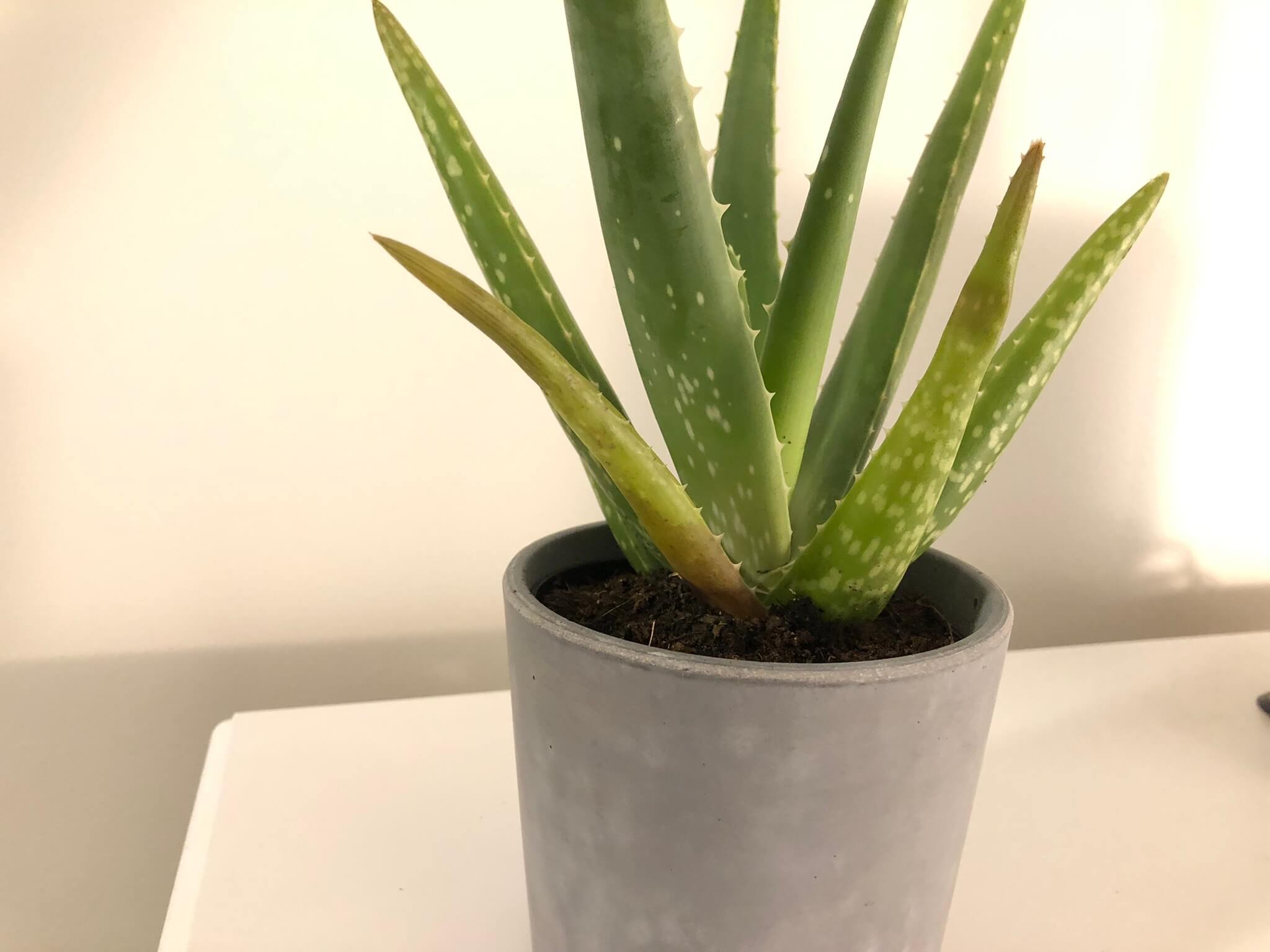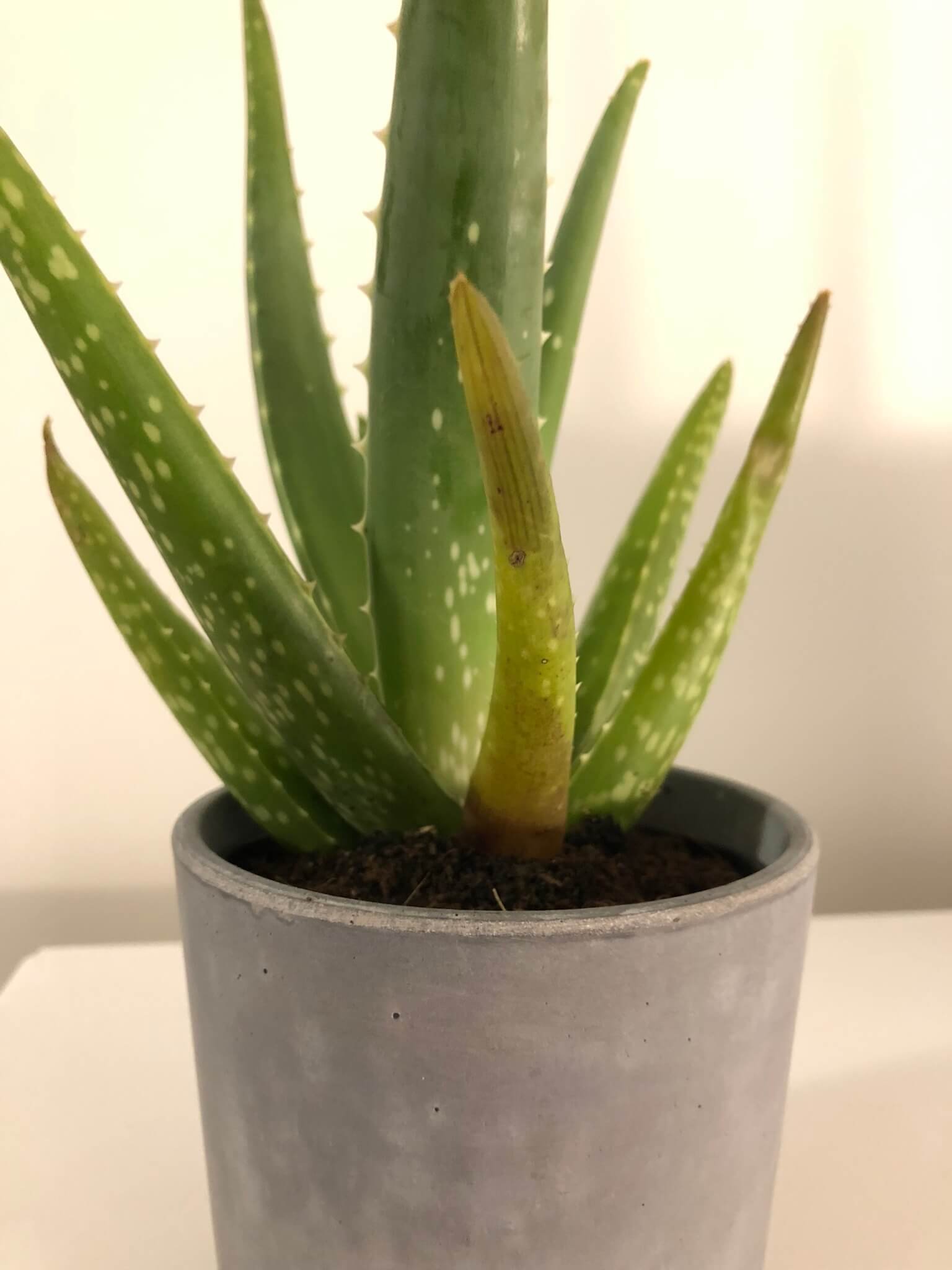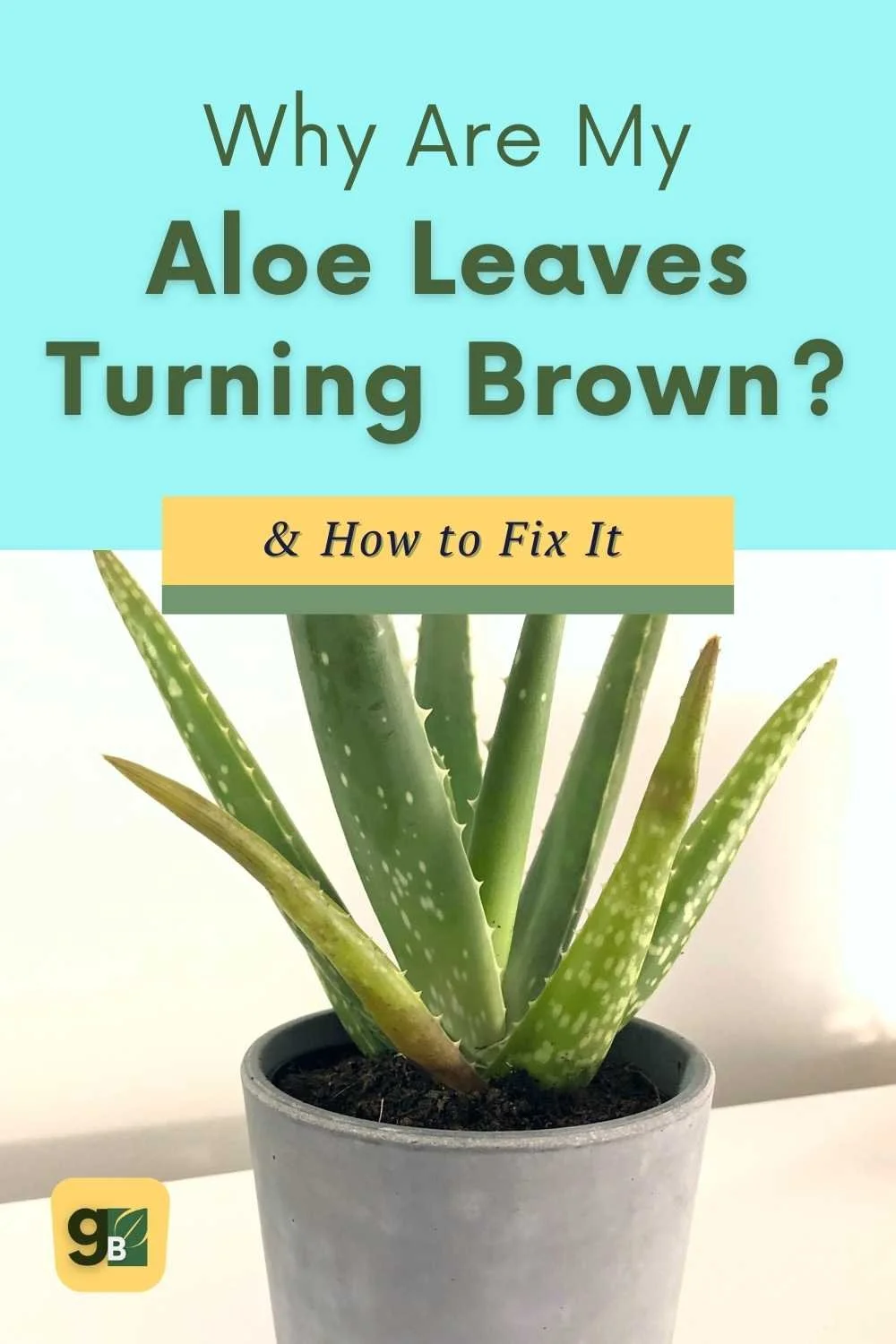How to Save an Overwatered Aloe Plant: Mistakes You're Making and How to Fix Them
How to fix an overwatered aloe plant
If you've overwatered your aloe vera plant, don't worry - you're not alone. It's a common mistake to make, especially if you're new to caring for this type of plant.
In this blog post, we'll discuss the mistakes people often make when watering aloe plants, as well as how to revive an overwatered aloe vera plant.
So read on and learn how to save your overwatered aloe!
The items listed are accompanied by affiliate links, meaning I earn a small commission if a purchase is made through my links. This has no impact on the cost to the consumer. I link to products this way whenever possible, and it has no bearing on the products I choose to review or recommend.
Can You Save an Overwatered Aloe Plant?
Let's start with the answer you came here for yes, you can save an overwatered aloe plant!
However, it will take some time and effort on your part. But don't fret, not all hope is lost if you've overwatered your aloe.
In fact, it is one of the most common mistakes people make when caring for this popular houseplant.
Signs of Overwatered Aloe Plant
There are a few telltale signs that you've overwatered your aloe vera plant. If you see any of the following, it's likely that your plant is overwatered:
- Roots that are soft and mushy
- Leaves that are wilting, turning yellow and brown
- A stem that is collapsing or rotting
- Excess water in the pot (i.e., waterlogged soil)
If you notice any of these signs, it's important to take action immediately. The longer you wait, the greater the chance that your overwatered aloe plant will die.
What Does an Overwatered Aloe Plant Look Like?
You will notice that this aloe plant is showing signs of being overwatered. The leaves are turning yellow/brown and are softer to the touch.
Check out aloe plants on Etsy!
How to Save an Overwatered Aloe Plant
Now that you know you overwatered your aloe plant, let's go over the steps to revive it.
Remove the aloe plant from its pot
First, you'll need to take your plant out of the pot and check the roots.
You are looking for signs of root rot like mushy, soft, or damaged roots.
Healthy aloe vera roots should be white. Also, roots that smell foul can be an indication of rotten roots.
Remove the dead/damaged roots
If you have detected signs of root rot or damaged roots they will need to be removed and trimmed back until you only have healthy roots remaining.
Using a sharp knife or gardening shears, cut away any mushy, soft, or blackened roots.
Be sure to disinfect your tools before and after use to avoid spreading fungal disease.
It's important to get rid of any damaged roots, as they will only rot further and make it difficult for your plant to uptake water.
Remove any yellow or brown leaves
Aloe is a succulent, so they have a remarkable ability to store water in their leaves. This means that when overwatered, the leaves are often the first to show signs of stress.
Yellow and brown leaves are a sign that your plant is overwatered and needs immediate attention.
To save your aloe plant, you'll need to remove any yellow or brown leaves.
Using a sharp knife or gardening shears, cut the leaves at the base of the plant.
Be sure to disinfect your tools before and after use to avoid spreading any fungal infection.
Treat the remaining healthy roots with a fungicide
Once you have trimmed away the damaged roots, you'll need to treat the remaining healthy roots with a fungicide. This will help prevent further root rot and protect your plant from diseases.
There are a variety of fungicides available on the market, so be sure to choose one that appropriate for use on aloe plants.
Select a new pot
You will be replanting your aloe vera so it is important to choose a new pot that will allow for proper drainage.
Terracotta pots are a good option, as they are porous and will help to wick away excess moisture.
Just remember that in the warmer months, terracotta pots can dry out quickly so you'll need to keep an eye on the watering.
Be sure to choose a pot that is only slightly larger than the root ball of your plant.
A pot that is too large will result in soggy soil, which can lead to overwatering.
Aloe vera plant roots grow horizontally, not vertically, so a pot that is too deep will not be necessary.
Also, make sure that there is a drainage hole in the bottom of the pot so that excess water can escape.
Choose a well-draining potting soil
Aloe plants need well-draining potting soil in order to thrive. Potting soil that is too dense or doesn't drain well can lead to overwatering.
There are a variety of soil mixes available on the market, but I recommend one that is specifically formulated for succulents and cacti. This will ensure that your plant has the drainage it needs.
Repot the aloe plant
Once you have selected a new pot and fresh soil, it's time to repot your aloe plant.
Carefully place the plant in the new pot and fill it in with the potting soil, being sure to pack it around the roots.
Place the aloe plant in a bright, sunny spot. Aloe plants need bright, indirect sunlight to thrive.
Do not water the aloe vera plant immediately as it needs time to adjust to its new environment. Wait a week or two before watering.
Monitor the aloe plant closely and water only when the soil is dry to the touch.
Overwatering is the number one cause of death for aloe plants, so be sure not to make this mistake!
By following these tips, you can save your overwatered aloe plant and revive it back to health.
Just be sure to take action as soon as you notice signs of overwatering, as this will give your indoor plant the best chance for recovery.
An up close view of overwatered aloe plant.
After reviving my overwatered aloe plant, it is healthy and thriving and showing signs of new growth.
How to Water an Aloe Vera Plant Correctly
Now that you know how to save an overwatered aloe plant, it's important to learn how to water aloe vera correctly.
Overwatering is the number one cause of death for aloe plants, so it's crucial that you avoid making this mistake.
Aloe vera are succulents, so they store water in their leaves and are drought tolerant. This means that they don't need to be watered often and can actually tolerate long periods of drought.
When watering an aloe plant, always check the soil first.
The soil should be dry to the touch before you water the plant. If the top 2 inches of the soil are dry then you should water the plant.
If the soil is still moist then you should wait a few days and then check again before giving it a drink.
Some people also find soil meters soil meters helpful in order to gauge when the plant needs water.
When you do water aloe vera plants, make sure to give them a good soak. Allow the water to run through the drainage holes in the bottom of the pot and then empty out any excess water that remains in the saucer.
It's important that you don't let your aloe plant sit in water as this can lead to overwatering and root rot.
Aloe plants like to dry out in between watering, so don't be afraid to let the soil get on the drier side.
If you're unsure whether or not to water your plant, it's better to err on the side of caution and wait a few extra days, overwatering is much more harmful to an aloe plant than underwatering.
In the warmer months, you may need to water your aloe plant more frequently as the pot will dry out quickly. Just be sure to check the soil first and only water when necessary.
By following these tips, you can ensure that your aloe plant gets the hydration it needs without overwatering. This will help to keep your plant healthy and thriving.
Pin for later!
FAQS About Watering Aloe Plants
What is too much water for aloe plants?
If the soil is waterlogged or the leaves are wilting, turning yellow or brown then this is a sign that your aloe vera plant has too much water.
How often should I water my aloe plant?
How often you should water an aloe plant will depend on certain factors such as the size of the pot, the type of potting mix, the climate, and whether or not the plant is in a sunny spot.
Generally speaking, you should only water an aloe vera plant when the soil is dry to the touch.
What are some signs that my aloe plant needs more water?
If your aloe plant's leaves shrink and curl inwards, and turn brown then this is a sign that it needs more water.
Should I cut off brown aloe vera leaves?
If the leaves of your aloe plant are brown then it's best to cut them off. This means that they are dying. Cutting off a dead aloe leaf will help the plant to focus its energy on new growth.
My Personal Experience Reviving an Overwatered Aloe Plant
Overwatering happens to the best of us.
I bought an aloe plant from Ikea for my husband's office and it was freshly watered and in good health when I brought it home.
My husband was so excited to have it spruce up his space that he watered it before I could even tell him how to care for it.
The aloe plant started to show signs of overwatering when its leaves began to turn soft, and yellow and the tips began to turn brown.
My husband quickly handed me the plant and told me something had gone wrong but he wasn't sure what. I took one look at the plant and knew it was overwatered.
Luckily, I was able to fix it quickly and before root rot could occur.
I put it near bright, indirect light to help dry it out and removed the leaves that had been affected and have not watered it since.
The plant is bouncing back and will recover, in fact, I see some new growth occurring at the base of the plant.
How to Fix an Overwatered Aloe Plant
Overwatering is one of the most common mistakes people make when caring for an aloe plant.
If you think you may have overwatered your plant, take action quickly to revive it.
If you follow the tips and tricks in this article you can not only save your overwatered aloe plant but also prevent overwatering from happening in the future.

















